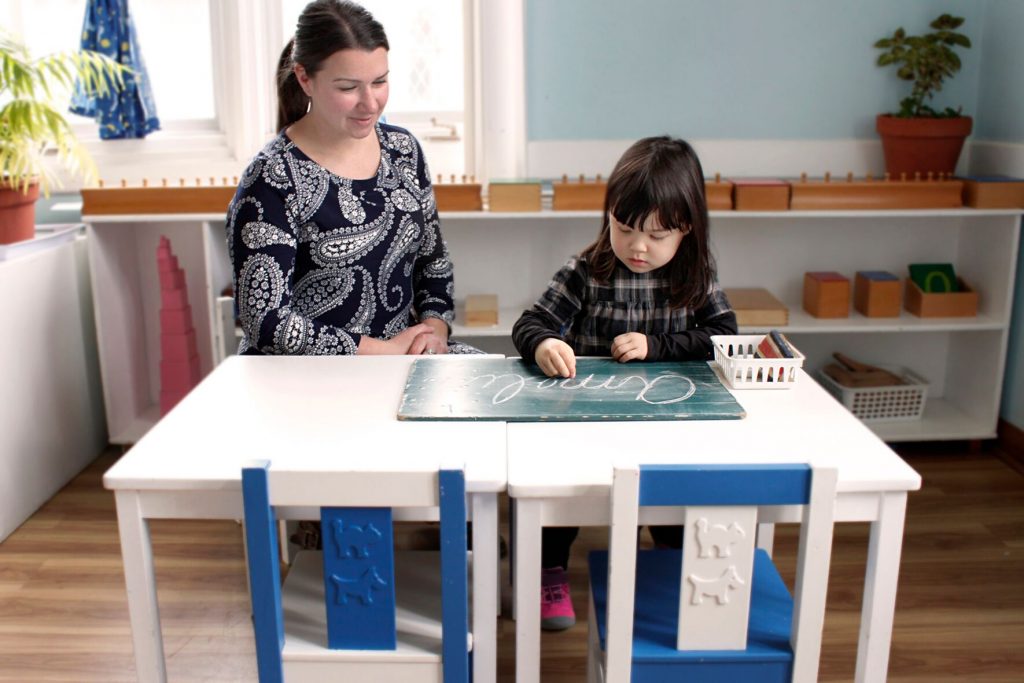I love writing on computers, but I am thankful that when I need or want to that I can write in cursive. I find great satisfaction in my penmanship when writing a personal letter. Cursive writing is a beautiful art form that is unique to each individual. No two handwritten letters are the same even though each word written is identical. Our handwriting is as unique as our own fingerprints or DNA. Cursive writing speaks about an individual’s personality and the type of day they are experiencing.
Handwriting may share some of the virtues of the growing slow-food movement. When I put pen to paper, there is a necessary deliberation that slows me down; and in the absence of the delete key, makes me choose my words more carefully.
The many different styles and fonts that you see in computers came from the fact that someone thought that the font was beautiful or “cool”. There are so many ways to write. More importantly, there is a lot of research out there on the developmental benefits of cursive writing.
I believe cursive writing still has its place even with the enormous benefits of technology.
An anonymous occupational therapist states “The idea of teaching cursive prior to print may have merit. Print and cursive are crucial parts of any school’s curriculum because of this: It provides a micro gymnasium for the body and mind. Even though writing a letter occurs in a very small space, it requires a complex integration of movement, pressure, and visual processing. Angular, straight, and circular movements are all sequenced in a specific order to imitate fairly complex visual images and motor skills. This activity provides an organizing foundation for the central nervous system that other skills can be integrated with. The visual spatial and coordinative skills that develop with a highly structured handwriting curriculum provide a neural structure for organizing other kinds of information and skills. Research shows that students perform higher in all subject areas when they participate in a fully developed handwriting curriculum.”
I believe the single greatest disadvantage to learning cursive writing is the time involved in mastering the skill.
On the flip side, there are many benefits to teaching cursive writing during the absorbent years of development, not least of which is that the movements of cursive writing are more natural and easy to form. The pencil flows along the paper without frequent stops within words. The hardest movements for a child’s hand to make are a perfect circle and a perfect vertical line. These are the components that make up printed script.
When working with the sandpaper letters in a Montessori classroom, teachers overwhelmingly agree that cursive letters are less confusing for the children, as the starting point is always the same (base line, going up). Print on the other hand has various starting points. There is also less confusion and reversal between the cursive forms of the letters ‘b’, ‘d’, ‘p’, and ‘q’ as there is in the print form, which can cause further confusion in children with dyslexia.
Also, children who learn to write cursive first make a very quick transition to reading print, but the reverse is not true. Words written in cursive are clearly separated from each other, so spatially it is simpler for a child to process. Cursive is also known to improve eye-hand coordination.
When children master a fundamental skill like cursive writing, it also builds their sense of self-confidence resulting in improved creativity.
Yes, computer skills will undoubtedly continue to be very important to our children in the years to come; however it is the opinion of many the amount of time a child spends on the computer should be limited. Isn’t it strange how much time we spend telling our children not to sit so close to the television, yet keyboarding will have them staring into a computer screen for every subject of their school day. Studies have shown that continual exposure to Wi-Fi (a high concentration of coherent radio waves) is related to many physiological and neurological dysfunctions in children’s development.
What do you think? Is there still a place for cursive writing in the development of our future leaders?
– Natasha Secord, Founder
